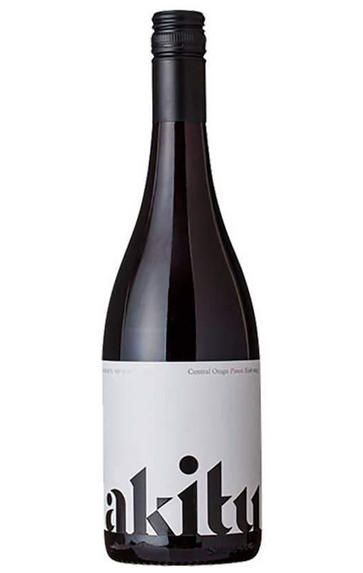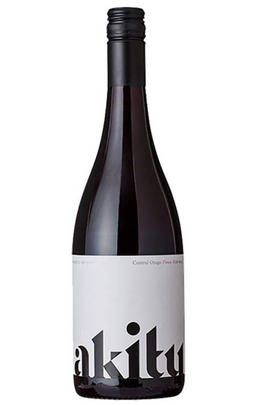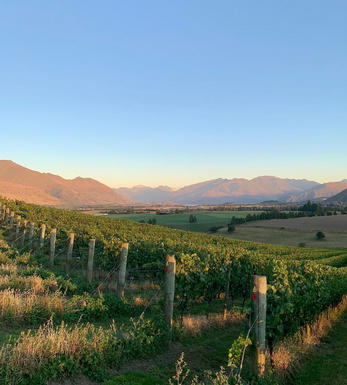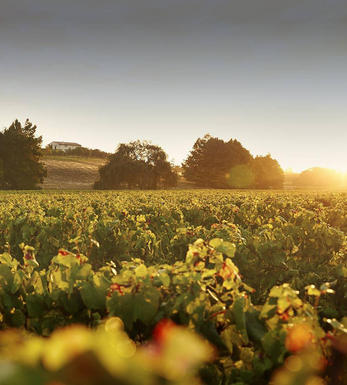
2019 Akitu, A1 Pinot Noir, Central Otago, New Zealand

Critics reviews
The 2019 Pinot Noir A1 is a scented and layered style, offering dark chocolate and dark cherry character with underlying fennel, rose petal and festive spices. This is a mid-weight, reflecting the cooler vintages in its tension and poise. Elegant and supple in the mouth with a corset of tension holding it in focus, the wine's structure builds toward the lengthy and fragrant conclusion. The tannins are very well handled, providing satisfying grip, and, in combination with the fresh acidity, this wine has the structural framework as well as the fruit concentration to evolve from its youthful, current self over the coming decade – maybe more. Who knows? This is only the eighth vintage of this cuvée, so predictions are educated guesswork.
Antonio Galloni, Vinous.com
The 2019 Pinot Noir A1 is a scented and layered style, offering dark chocolate and dark cherry character with underlying fennel, rose petal and festive spices. This is a mid-weight, reflecting the cooler vintages in its tension and poise. Elegant and supple in the mouth with a corset of tension holding it in focus, the wine's structure builds toward the lengthy and fragrant conclusion. The tannins are very well handled, providing satisfying grip, and, in combination with the fresh acidity, this wine has the structural framework as well as the fruit concentration to evolve from its youthful, current self over the coming decade – maybe more. Who knows? This is only the eighth vintage of this cuvée, so predictions are educated guesswork. 2023-2032.
Rebecca Gibb MW, Vinous
Pretty nose of sliced mushrooms, cranberries, cherries, dried flowers and pink peppercorns. It’s medium-bodied with bright acidity and sleek, fine tannins. Crunchy and vibrant. Lovely red fruit and subtle spice. Drink or hold.
James Suckling, jamessuckling.com
A dense, mineral, terroir-driven Pinot, that’s like a coiled spring at present. There are lots of herbal blackberry and perfumed cherry fruit layers lurking alongside the flinty tones, creamy lees and charred oak, but it is still nervy and nascent. A complex, serious wine that’s full of potential. Drinking window 2022-2032.
Tina Gellie, Decanter
Considering the heat of this vintage, this has turned out really well. This is taut and aromatic with fresh, vivid cherry and raspberry fruit. The palate has a lovely energy, showing bright, elegant red and black cherry fruit with a silky texture: there’s some finesse and a fine herbal quality sitting under the fruit. There’s a lovely fruit quality here, but it blends so beautifully with the more savoury, structural elements. Very fine.
Jamie Goode, Wine Anorak
Elegant, supple pinot noir with purity and power. Layers of spice and floral flavours with a suggestion of roasted chestnut and a thread of saline and oyster-shell. Restrained with exciting development potential.
Bob Campbell, The Real Review
About this WINE

Akitu
Since its inception in 2002, Akitu – meaning ‘summit’ in Maori – has quickly gained renown thanks to its Burgundian-style Pinot Noirs, which have been hailed as some of the best in New Zealand.
Spread across 12 hectares in Wanaka, Central Otago, the vineyard benefits from a semi-continental climate similar to that of Burgundy. The site is planted at 380 metres altitude, on 250-million-year-old-schist soils, both of which are credited with ensuring great purity and complex depth in the fruit. The 41,000 vines are made up of six Pinot Noir clones, all planted under the watchful eye of viticulturalist Dr. David Jordan.
Founder Andrew Donaldson has dedicated his winery entirely to the production of Pinot Noir. Sustainability is also key; no harmful chemicals or fertilisers are used in any part of the winemaking process. Akitu produces just three wines: the elegant, refined and ageable A1 Pinot Noir; the fruit-forward and playful A2 Pinot Noir; and the mineral, savoury Pinot Noir Blanc.

Central Otago
Central Otago is the most southerly wine region in the world and is responsible for five-point-five percent of a href=/region-3-new-zealand>New Zealand's vines (1,253 hectares in 2006). Central Otago was first identified as a site of serious Pinot potential in 1895 by Italian viticulturalist Romeo Bragato, drafted in by the government to treat the Phylloxera louse, subsequently recommending grafted rootstocks as a remedy in 1901. It had been thought to be worth even more during the Gold Rush days of the 1860s, before being turned over to merino sheep and later fruit orchards until the 1970s. In 1976, Gibbston Valley's alluvial gravel soils were the first to be planted in the area.
It's a measure of the success of the Central Otago ‘brand’, and the appeal of its full-bodied Pinot Noirs, that the region has experienced a 350 percent increase in the vines planted there, and a 125 percent increase in the number of new wineries over the same period (up to 89, or 16 percent of the country's total); as per b>Marlborough's relationship with a href=/grape-sb-sauvignon-blanc>Sauvignon Blanc, b>Pinot Noir now represents approximately 75 percent of the Central Otago vineyards. That the region's capital, Queenstown, annually plays host to the country's Pinot Noir forum is further proof of the region's significance. More controversially, the recent rush to secure vineyards within this now fashionable viticultural zone has led to a rash of criticism over the quality of some of the newcomers.
Located at the foot of South Island, the region may be on the 45th parallel south, but its site among the Bannockburn Hills of the Southern Alps (at approximately 200 metres above sea level) ensures a continental climate, if one dogged by frosts and marked by significant swings in temperature (up to 40 degrees Celsius at times). Soil profiles vary between the deep silt loams of the Bannockburn sub-region, while the wider Cromwell Basin displays both sandy loam over calcium deposits as well as alluvial loess over schist. Vinification typically involves French-oak barrel ageing of between 10 to 18 months.
Stylistically, the Gibbston Valley wines (such as those of Peregrine Wines) show a sweet, soft red raspberry and strawberry fruitiness, while the warmer Bannockburn/Loburn areas produce more powerful, tannic styles with black cherry and thyme notes b>Felton Road's range is a prime example. Fine Riesling is also produced amongst the schistous soils.
Recommended producers: Amisfield Estate, a href=/producer-3606-felton-road>Felton Road, Peregrine Wines, Ostler Vineyard.

Pinot Noir
Pinot Noir is probably the most frustrating, and at times infuriating, wine grape in the world. However when it is successful, it can produce some of the most sublime wines known to man. This thin-skinned grape which grows in small, tight bunches performs well on well-drained, deepish limestone based subsoils as are found on Burgundy's Côte d'Or.
Pinot Noir is more susceptible than other varieties to over cropping - concentration and varietal character disappear rapidly if yields are excessive and yields as little as 25hl/ha are the norm for some climats of the Côte d`Or.
Because of the thinness of the skins, Pinot Noir wines are lighter in colour, body and tannins. However the best wines have grip, complexity and an intensity of fruit seldom found in wine from other grapes. Young Pinot Noir can smell almost sweet, redolent with freshly crushed raspberries, cherries and redcurrants. When mature, the best wines develop a sensuous, silky mouth feel with the fruit flavours deepening and gamey "sous-bois" nuances emerging.
The best examples are still found in Burgundy, although Pinot Noir`s key role in Champagne should not be forgotten. It is grown throughout the world with notable success in the Carneros and Russian River Valley districts of California, and the Martinborough and Central Otago regions of New Zealand.


Buying options
Add to wishlist
Description
Matthew Cobb, Account Manager, Berry Bros. & Rudd
wine at a glance
Delivery and quality guarantee